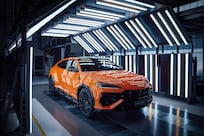AJMAN // The Ajman Municipality and Planning Directorate will spend about Dh300 million this year to upgrade infrastructure, most notably roads, a senior official said yesterday.
The projects include constructing and paving new roads, adding street lights, and building bridges and parking areas, said Yahya Ibrahim Ahmad, the directorate's director general.
"Among the new roads under construction is the Sheikh Ammar bin Humaid Street from Damascus Street to Emirates Road - 4.7km at a cost of Dh10million," he said.
"The two way-road, which will link the emirate with Emirates Road, will also have a metallic divider separating going and coming traffic."
Construction started in 2010 and is expected to finish in the last quarter of this year.
He said that the directorate was also building internal roads in the Jurf 21 area at a total cost of Dh16m.
This residential zone is one of the least-paved in the emirate, and residents have often complained about poor services.
The 9km Zorah al Helio Road in the new Zorah area is near completion and has so far cost Dh70m. Other roads under construction include al Zahra Road that costs Dh5m; the 2.5km Sheikh Rashid bin Saeed Street at Dh10m; and the completion of Sheikh Maktoum Road at Dh154m.
The municipality is also building a 900-vehicle car park in front of the Ajman Museum at a cost of Dh500,000 and installing a sewage network at a cost of Dh23m in Nuaimiya area.
Meanwhile, road lighting projects are being implementing along streets in the Masfoot, Musheiref and Zahra areas, Sheikh Rashid al Hadhar Road and Sheikh Ammar bin Humaid Road at a total cost of Dh3m.
There is also a redevelopment project at al Humaidiya Bridge, the biggest in the emirate, at a cost of Dh250m, but it is a federal project, which has led to a shut down of major roads in the area.
But the projects have raised hopes of residents in unpaved areas like Jurf 21.
"Our unpaved, dusty roads could turn invisible for some minutes when a speeding car passed during the day, and are always dark at night with no lights," said Hassan Abdullah, a resident of Jurf 21. "The only thing we would ask the authorities do is to light and pave these roads."





